No products in the cart.
Great news! The Canada Post strike is over! We’re resuming deliveries to Canada!
Excellente nouvelle ! La grève de Postes Canada est terminée ! Nous reprenons les livraisons vers le Canada !
Great news! The Canada Post strike is over! We’re resuming deliveries to Canada!
Excellente nouvelle ! La grève de Postes Canada est terminée ! Nous reprenons les livraisons vers le Canada !
Geucamen ointment tuba 40 g
$14.60

[category_image]
Vipratox liniment tube 40 g
$20.72
Vipratox liniment for symptomatic relief of pain in rheumatism, neuralgia, sciatica, lumbago, radiculitis, myalgia and arthralgia.
Category: Gastrointestinal tract and liver
Brand: Vishpha
Pharmacological properties
Pharmacodynamics. Gyurza venom (venenum macroviperae lebetina), containing phospholipase, phosphodiesterase, hyaluronidase, and other active substances, is the key active ingredient of Vipratox liniment. The pharmacological action of Vipratox liniment is caused by toxins that are part of the gyurza venom. Postsynaptic neurotoxins provide specific blockade of n-cholinoreceptors of the subsynaptic membrane of skeletal muscles and certain parts of the central nervous system. Presynaptic nerve endings are affected by presynaptic neurotoxins, which contribute to increased secretion of mediators. Actively affecting cell membranes, membrane-active neurotoxins (cardiotoxins, cytotoxins, which are polypeptides in chemical structure) cause their depolarization, including.
Along with the specific action, which directly depends on the composition of the poison, the therapeutic effect of the drug is caused by reflex reactions, the occurrence of which is associated with irritation of skin receptors, the effect of biogenic substances formed during the local action of the drug on tissues, the effect on the reactions of the body’s immune system and stimulation of the hypothalamic-pituitary-adrenal axis. When applied locally, the poison of the gyurza has an irritating and analgesic effect.
Salicylic acid, when applied externally, has an antiseptic, distracting, irritating and keratolytic effect, contributing to optimal penetration of the active ingredients of the ointment.
Due to its excellent lipophilicity, fir oil easily penetrates the epidermis, irritating the sensory nerve endings of both superficial vessels and deeper tissues.
Due to the inclusion of camphor in the composition, the drug has a local irritating, analgesic and anti-inflammatory effect and, by stimulating sensitive nerve endings of the skin, helps improve tissue trophism.
Pharmacokinetics: Not studied.
Indication
Symptomatic treatment of pain in rheumatism, neuralgia, sciatica, lumbago, radiculitis, myalgia, arthralgia.
Application
To avoid side effects, you should first apply a small amount of liniment to the skin to determine individual sensitivity to the drug.
Depending on the surface area of the affected area, liniment should be applied in a small amount – 5-10 g and thoroughly rubbed into the skin 1-2 times a day until the pain syndrome stops.
The duration of the course of therapy is determined by the doctor depending on the severity of the disease and the effectiveness of the therapy.
Children: There is no experience in children, therefore the use of the drug in this category of patients is not recommended.
Contraindication
Hypersensitivity to the components of the drug. ba, whooping cough, tendency to bronchospasm and convulsions, acute pulmonary tuberculosis, cerebral and coronary circulation disorders, tendency to vasospasm, severe renal and liver dysfunction, pustular skin diseases, damage to the integrity of the skin at the site of drug application, fever, general fatigue.
Side effects
Local allergic reactions are possible (including itching, burning, rash, dryness, peeling, irritation, contact dermatitis, urticaria), increased body temperature.
Special instructions
Do not apply to skin with signs of an allergic reaction.
Avoid contact with eyes, open wounds and mucous membranes. In case of accidental contact with eyes or mucous membranes, rinse thoroughly with plenty of running water.
Use with caution in the elderly.
Use during pregnancy and breastfeeding. Contraindicated during pregnancy and breastfeeding.
Ability to influence the reaction rate when driving vehicles or working with other mechanisms. The drug does not affect the reaction rate when driving vehicles or working with other mechanisms.
Interactions
Not studied. A sufficient number of controlled drug interaction studies have not been conducted, it is possible that excessive use of topical salicylates may enhance the effect of coumarin anticoagulants and antiplatelet drugs. Caution should be exercised in patients taking coumarin anticoagulants and antiplatelet drugs, including acetylsalicylic acid.
Overdose
In case of accidental contact with mucous membranes, the ointment causes severe irritation. Allergic reactions are possible (itching, dermatitis, peeling of the skin). The use of the liniment should be discontinued and its residues should be washed off from the skin. If necessary, symptomatic therapy is indicated.
Incorrect use. Accidental ingestion of the ointment may cause gastrointestinal symptoms such as vomiting and diarrhea. Treatment is symptomatic.
Accidental ingestion of large amounts of ointment may cause symptoms of acute poisoning, such as nausea, vomiting, abdominal pain, headache, dizziness, feeling hot/flushing, convulsions, respiratory depression and coma.
Treatment of patients with severe gastrointestinal or neurological symptoms of poisoning is symptomatic. Vomiting should not be induced.
Storage conditions
At a temperature of 8-20 °C.
Be the first to review “Vipratox liniment tube 40 g” Cancel reply
You may also like



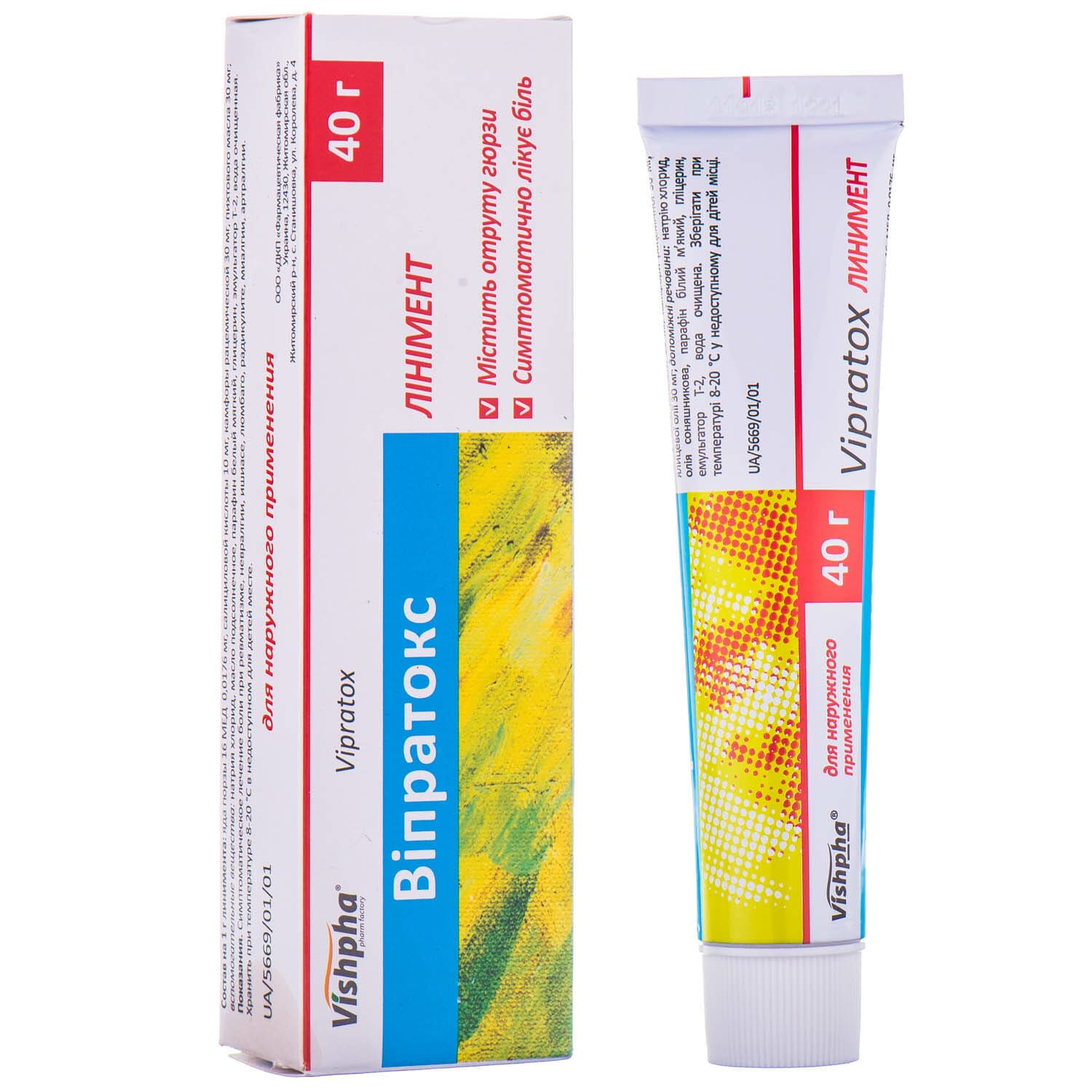
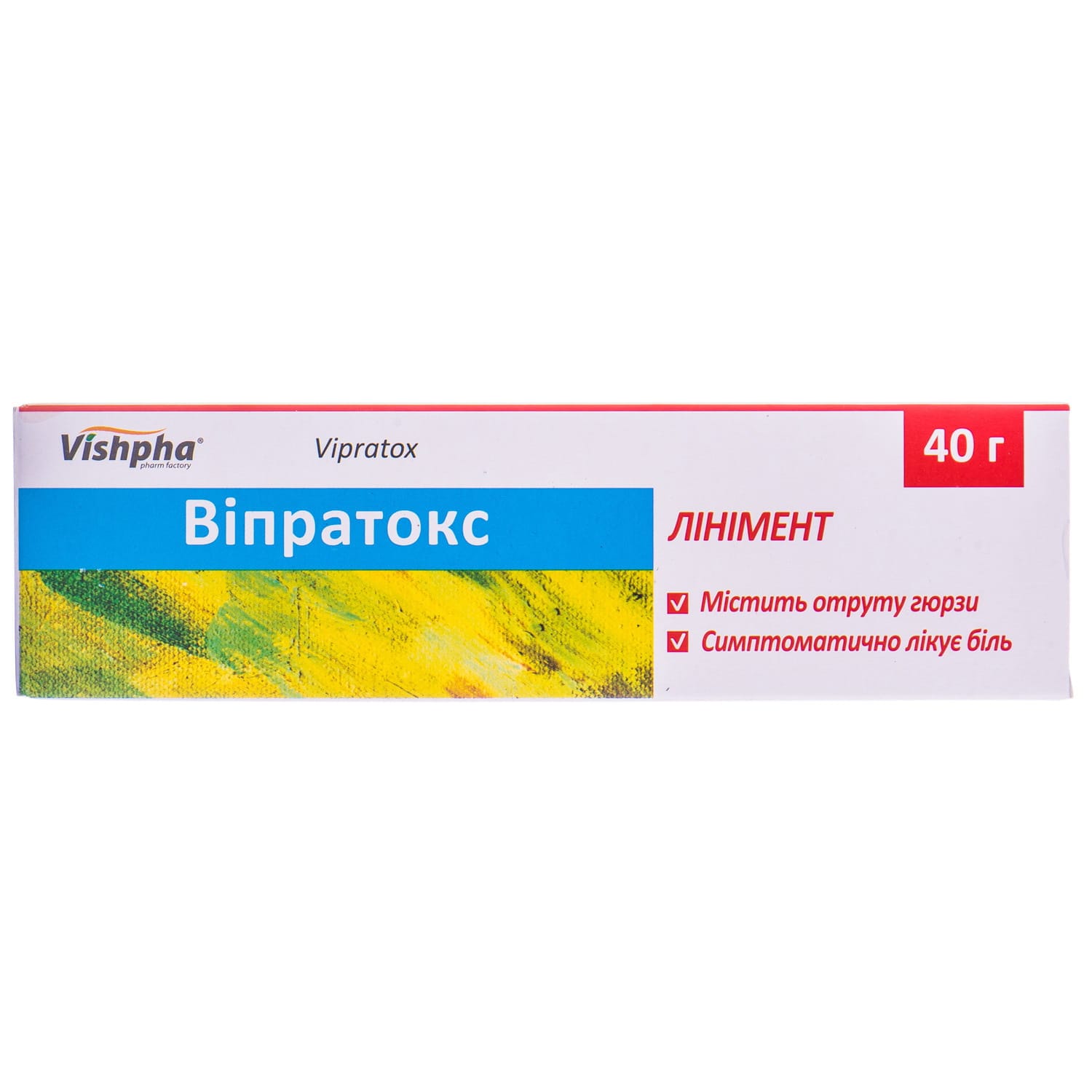
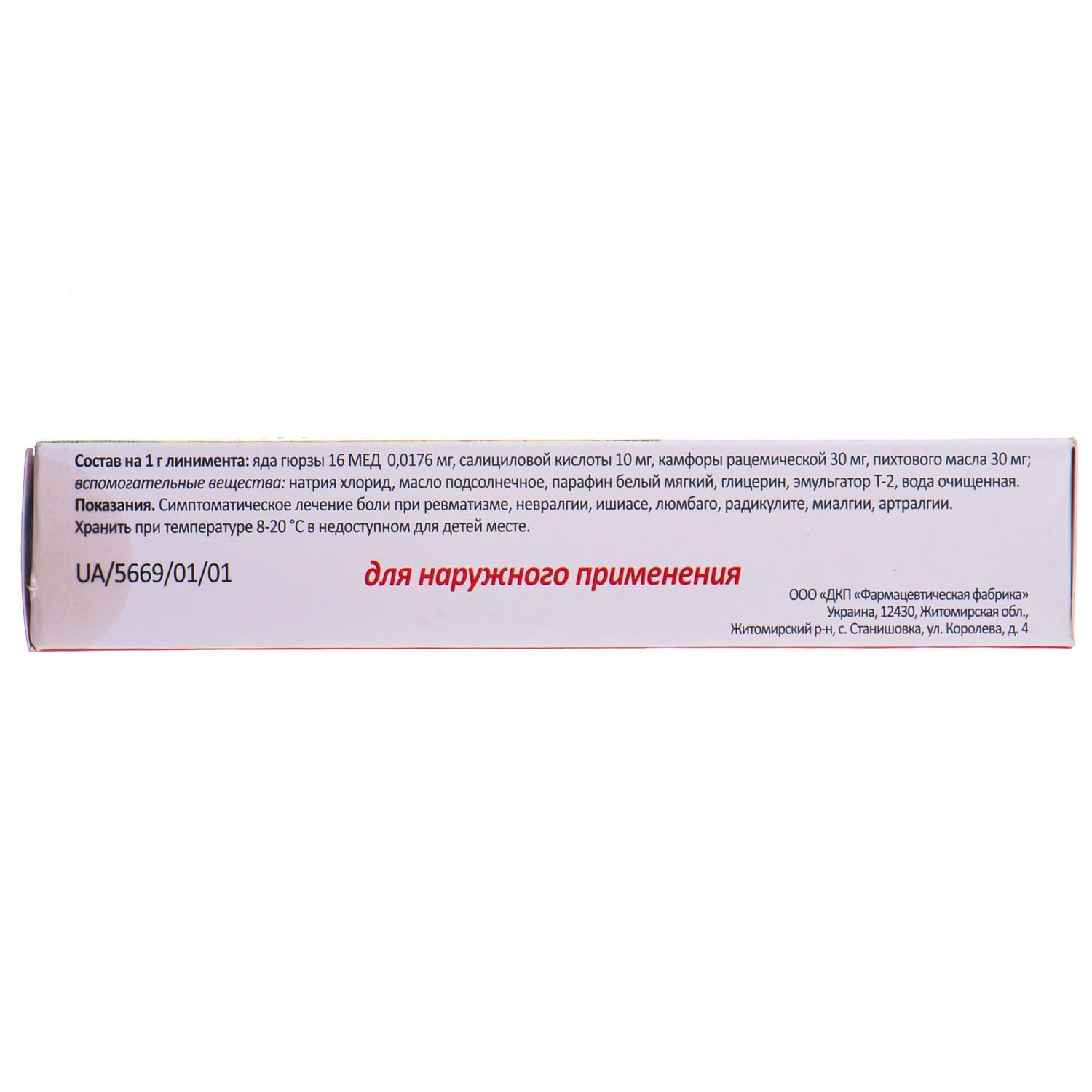
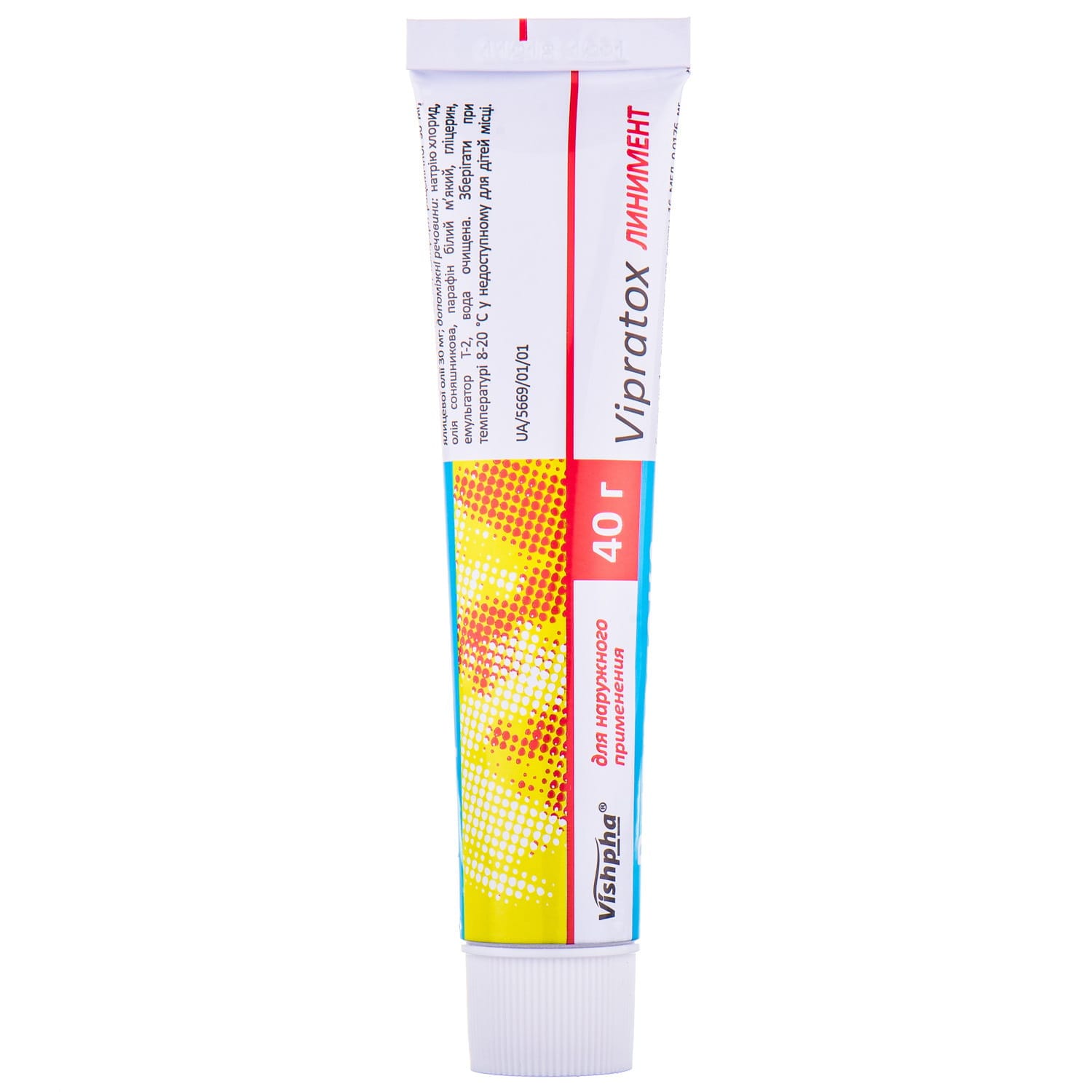
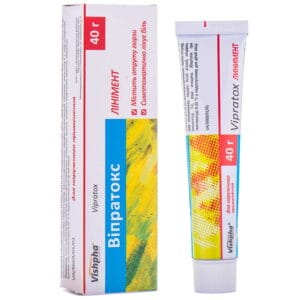
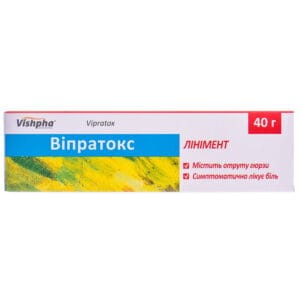
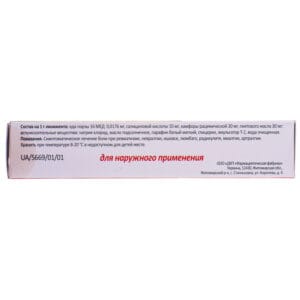
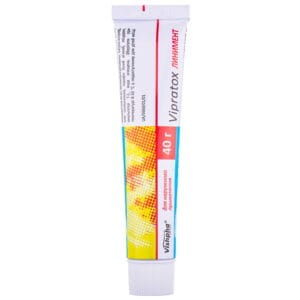
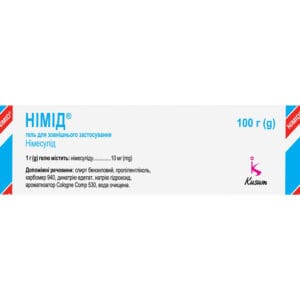
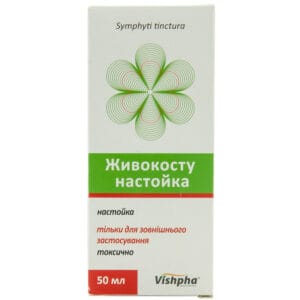
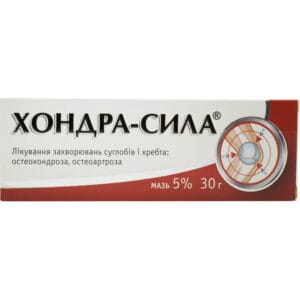
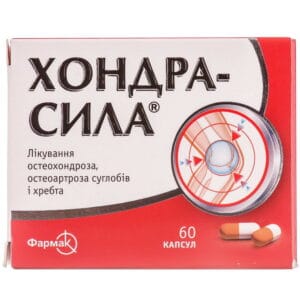
Reviews
There are no reviews yet.